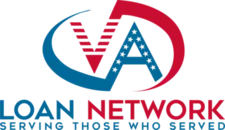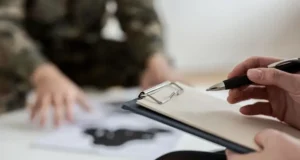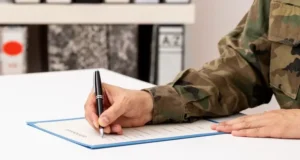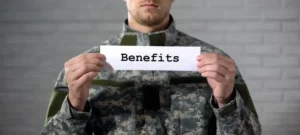Last updated on November 3rd, 2024 at 05:59 pm
For veterans and active-duty service members, the VA loan benefit offers an excellent opportunity to purchase a home without a down payment, enjoy competitive interest rates, and avoid private mortgage insurance (PMI).
However, many may not realize that this benefit can be used multiple times throughout their lives. Whether you’re buying a second home, refinancing an existing VA loan, or even holding multiple VA loans simultaneously, the VA loan benefit provides flexibility for veterans and service members.
In this guide, we’ll explore how you can reuse your VA loan benefit, restore your entitlement, calculate down payments when entitlement is limited, and manage multiple VA loans.
In this Article
Can You Use a VA Loan More Than Once?
Yes, you can use a VA loan multiple times, provided you have remaining entitlement. This means you can leverage your VA loan benefit throughout your life by selling a home purchased with a VA loan and paying off the loan in full, which generally restores your entitlement for future use.
Key points on reusing a VA loan benefit:
- Entitlement: Your ability to reuse a VA loan depends on your remaining entitlement, which reflects the available portion of your VA loan guarantee.
- Restoring Entitlement: Selling a home financed with a VA loan and paying it off usually allows you to restore your entitlement, enabling you to use the loan benefit again.
- No Usage Limit: There is no limit on how many times you can utilize a VA loan as long as you have remaining entitlement.
What is VA Loan Entitlement?
VA loan entitlement is the amount the Department of Veterans Affairs (VA) guarantees to repay a lender if a borrower defaults on a VA loan. This benefit helps military members and their families secure favorable terms for purchasing a home.
VA loan entitlement is valuable because it provides access to benefits like no down payment, lower interest rates, no private mortgage insurance (PMI), reduced closing costs, and no penalty for early payoff.
There are two types of entitlement:
- Basic Entitlement: Also known as primary entitlement, this is $36,000. The VA usually covers up to 25% of the loan amount.
- Bonus Entitlement: This provides additional entitlement beyond the basic amount, increasing borrowing power.
To calculate remaining entitlement, a borrower can multiply their county’s conforming loan limit by 25% and subtract any entitlement already used. Eligibility for a VA loan depends on factors like Length of Service (LOS), Character of Service (COS), and meeting credit and income requirements.
VA Loan Entitlement Chart
| Type | Entitlement Amount | Home Price Range |
|---|---|---|
| Basic | Up to $36,000 | Up to $144,000 |
| Bonus | Over $144,000 | More than $144,000 |
Note: Bonus entitlement allows borrowing without a down payment on higher-priced homes, even with an existing VA loan.
Full Entitlement
Full entitlement represents the maximum amount the VA will guarantee to a lender if you default on a loan, covering 25% of the loan amount. This is key to using your VA loan benefit without a down payment. You have full entitlement if you’ve never used a VA loan before, but you can restore it multiple times if you’ve paid off the loan and sold the property.
- Full Entitlement Basics: Covers 25% of the loan amount without a down payment.
- Restoring Full Entitlement: Can be restored after selling a property and paying off the loan.
- First-Time Buyers: If you’re new to VA loans, check out first-time VA loan tips to understand the process better.
Partial Entitlement
Partial entitlement applies if you’ve already used a VA loan, but full entitlement has not been fully restored. You may have partial entitlement in cases such as:
- Actively repaying an existing VA loan
- Having paid off a VA loan but still own the property
- Refinancing a VA loan to a non-VA loan
- Losing the property to foreclosure
You can reuse the VA loan benefit as long as you have remaining entitlement. However, with partial entitlement, a down payment might be required if the entitlement does not cover 25% of the loan value.
- Example Calculation: If you previously used $150,000 of entitlement, the VA will calculate your remaining coverage based on the local conforming loan limit (e.g., $806,500).
- VA Guarantee: For a $250,000 loan, the VA guarantees $41,625 of the loan, meaning you would need a down payment of $20,875 to meet the 25% requirement.
Bonus Entitlement
VA loans provide both basic and bonus entitlement. Basic entitlement is $36,000, designed for homes around $144,000 in value, while bonus entitlement allows for larger loans by covering 25% of a home’s value above $144,000.
- No Maximum Loan Cap: As long as you have full entitlement, the VA can guarantee up to 25% of the loan, even for higher-priced homes.
- High Loan Value Flexibility: The bonus entitlement enables veterans to secure larger loans by providing a 25% guarantee on homes above the basic limit.
Understanding Second-Tier Entitlement and Real-Life Example
Second-tier entitlement is particularly useful when a veteran has already used their basic entitlement and still wants to take out another VA loan. It allows eligible veterans to have two VA loans at the same time for two different homes, provided they meet the entitlement and occupancy requirements.
Real-Life Example:
John, a Navy veteran, bought his first home using his basic entitlement. He receives Permanent Change of Station (PCS) orders and needs to relocate to another duty station. John wants to purchase a new home in his new location while keeping his first home as a rental property. By using second-tier entitlement, John is able to purchase his second home without needing a down payment.
However, if John’s remaining entitlement is insufficient, he would need to make a down payment. Here’s how to calculate it.
Financial Implications of Multiple VA Loans
When a veteran has remaining entitlement, they can use it to purchase another home with a VA loan. However, if the remaining entitlement is not sufficient to cover 25% of the loan amount, a down payment will be required. Here’s how to calculate the required down payment.
Calculating the Required Down Payment:
- Determine Remaining Entitlement: Find out how much entitlement you have left by checking your Certificate of Eligibility (COE).
- Calculate 25% of the Loan Amount: Multiply the loan amount by 25%.
- Subtract Remaining Entitlement: Subtract your remaining entitlement from 25% of the loan amount.
- The Result is the Down Payment: The result is how much you’ll need to put down.
Example Calculation:
- Loan Amount: $400,000
- Required 25%: $400,000 × 0.25 = $100,000
- Remaining Entitlement: $50,000
- Down Payment: $100,000 – $50,000 = $50,000
In this scenario, the veteran would need to make a $50,000 down payment because their remaining entitlement only covers half of the required 25%.
How to Restore Your VA Loan Entitlement
Restoring your VA loan entitlement is crucial if you want to reuse your VA loan benefit for future home purchases. There are several ways to restore entitlement, each depending on your current situation.
Methods for Restoring Entitlement:
| Restoration Method | Process |
|---|---|
| Sell the Home | Sell the home, pay off the loan, and apply for full entitlement restoration. |
| Pay Off the Loan | Pay off the loan and apply for a one-time restoration while keeping the home. |
| Foreclosure or Short Sale | Resolve outstanding debts and apply for entitlement restoration. |
1. Sell Your Home
The most common way to restore your entitlement is by selling the home you purchased using your VA loan. Once the loan is fully paid off through the sale, your entitlement can be restored. After the sale, you will need to submit VA Form 26-1880 to apply for full entitlement restoration.
2. Pay Off the Loan
If you wish to keep the home but pay off the loan, you can apply for a one-time restoration. This option allows you to use your VA loan benefit for another home purchase without selling the first property. This method is commonly used when a veteran wants to keep their original home as an investment or rental property.
3. Foreclosure or Short Sale
In cases of foreclosure or short sale, you may still be able to restore your entitlement. However, you will likely need to repay any remaining balance on the loan before your entitlement is fully restored. While foreclosure and short sale may temporarily affect your ability to use your VA loan benefit, they don’t permanently disqualify you from obtaining future VA loans.
Bankruptcy and Entitlement Restoration
How Bankruptcy Affects Your VA Loan Eligibility:
If you’ve gone through Chapter 7 or Chapter 13 bankruptcy, you may wonder how this impacts your VA loan eligibility. While bankruptcy can affect your credit score and ability to obtain financing, it does not permanently bar you from using your VA loan benefit.
- Chapter 7 Bankruptcy: Veterans must wait two years after a Chapter 7 discharge before becoming eligible for a VA loan again.
- Chapter 13 Bankruptcy: Veterans may be eligible for a VA loan one year after making timely payments under a Chapter 13 repayment plan, provided they receive approval from the bankruptcy trustee.
Impact on Entitlement:
In some cases, veterans may have used their VA loan benefit before declaring bankruptcy. While bankruptcy itself does not eliminate the entitlement, any outstanding debt on the previous VA loan must be resolved before entitlement restoration can occur.
Loan Limits and Entitlement Restoration
| Category | Details |
|---|---|
| Full Entitlement | No loan limits; borrow without a down payment. |
| Partial Entitlement | Loan limits vary by county (e.g., $765,600 in 2024). |
| Restoring Entitlement | Sell the home or pay off the loan to restore full entitlement. |
| Foreclosure/Short Sale | Repay any remaining loan balance for restoration. |
| One-Time Restoration | Pay off the loan but keep the home to use your VA loan again. |
Frequently Asked Questions (FAQs)
1. Can I use my VA loan more than once?
Yes, veterans and service members can use their VA loan benefit multiple times as long as they have entitlement available or can restore their entitlement.
2. Can I have multiple VA loans at once?
Yes, it’s possible to hold multiple VA loans at once if you have remaining entitlement or use second-tier entitlement. The second home must be your primary residence.
3. Do I have to sell my home to reuse my VA loan benefit?
No, you don’t need to sell your home. You can pay off the loan and apply for a one-time restoration of your entitlement, allowing you to keep the home and buy another.
4. What is the VA funding fee for subsequent uses?
The VA funding fee for subsequent uses is 3.6% of the loan amount with no down payment required. Veterans with service-connected disabilities may be exempt.
5. Can I refinance my VA loan more than once?
Yes, you can refinance your VA loan multiple times, either through a VA Streamline Refinance (IRRRL) or a VA Cash-Out Refinance.
6. What happens if I go through a foreclosure or short sale?
Even if you experience a foreclosure or short sale, you can still use your VA loan benefit in the future. You may need to restore your entitlement by repaying any outstanding loan balances.

















